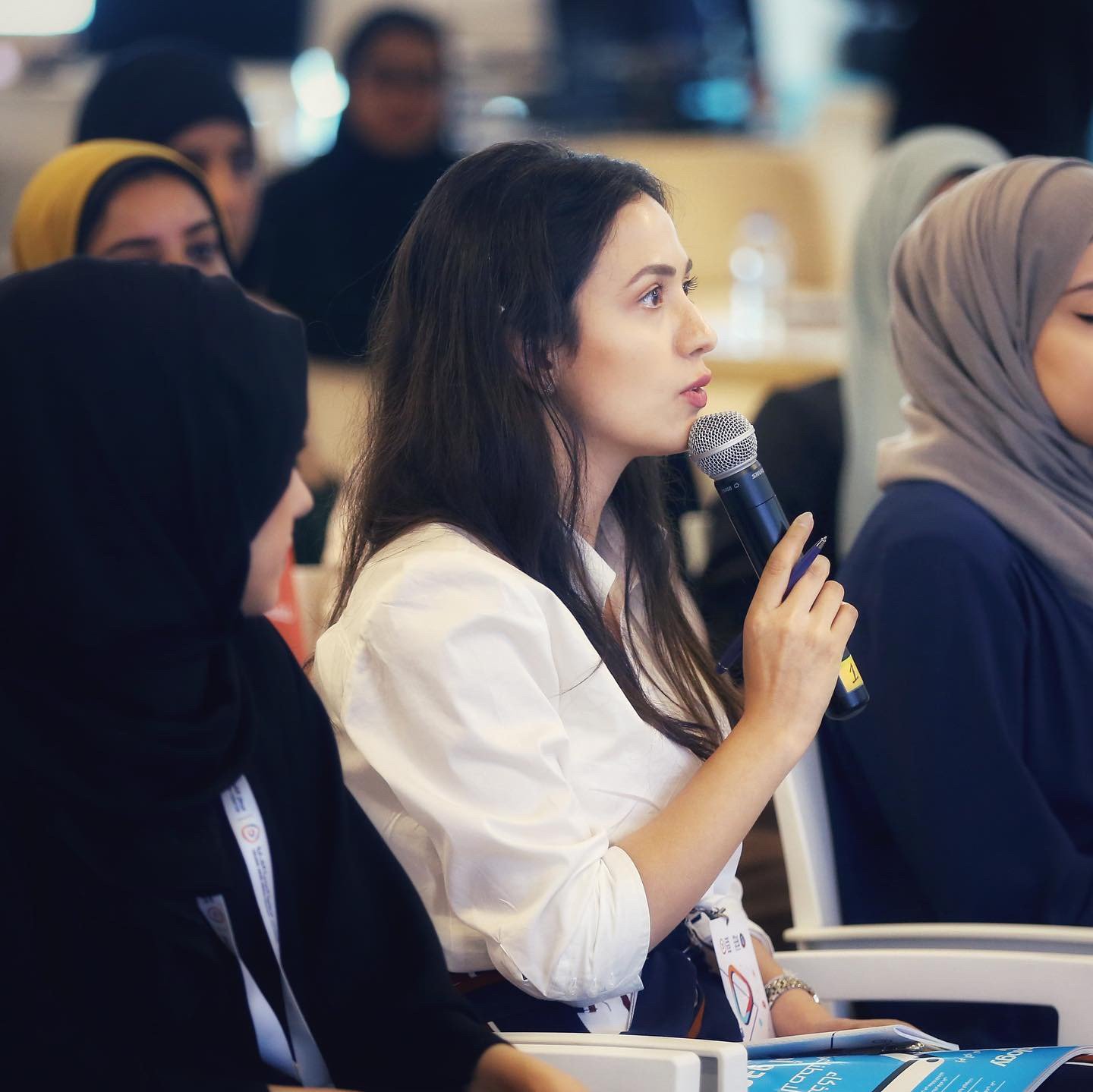Why Storytelling Is the New Weapon of Peace: How Feminist Journalists and Media Advocates in Conflict Zones Are Rewriting Narratives of War, Identity, and Global Power—and Turning the Microphone Toward Justice
Introduction: A War of Words, a Battle for Truth
In every war-torn city, every refugee camp, every bombed-out classroom, stories are buried beneath the rubble. But while tanks roll and regimes shift, something more powerful often survives: narrative. Today, storytelling has evolved into one of the most strategic and subversive tools of peacebuilding—especially in the hands of feminist journalists and media advocates operating in conflict zones.
Unlike political rhetoric or legal frameworks, storytelling bypasses policy and pierces the heart. It humanizes numbers, reclaims dignity, and creates a ripple of empathy across borders. For women—and especially for Arab, African, and displaced women—storytelling has become not just a means of survival, but a strategy of resistance and reconciliation.
This article explores how feminist storytellers are reshaping how the world understands conflict, gender, and peace—and why their work is not just valuable, but vital.
1. From Reporting to Reclaiming: The Shift in Conflict Journalism
Traditional conflict reporting has long prioritized the perspectives of power: generals, presidents, and statistics. Feminist journalists have challenged this status quo by asking: Whose war is being told? Whose suffering is counted? Whose voice is missing?
Journalists like Zahra Joya, the Afghan founder of Rukhshana Media, built a platform specifically to tell the stories of Afghan women under Taliban rule—stories Western outlets often ignored or oversimplified. Her work, which went viral globally, didn’t just document suffering—it demanded recognition.
Similarly, in Syria, local journalists like Zaina Erhaim, who trained dozens of citizen reporters inside Aleppo, ensured that women’s experiences during the siege were not erased. Through diaries, short films, and first-person essays, she reframed women not as collateral victims but as resilient agents navigating war, caregiving, and revolution simultaneously.
This shift from reporting to reclaiming reframes conflict not as a battleground of weapons—but of words, meanings, and memory.
2. The Peacebuilding Power of Personal Narrative
In the realm of international peacebuilding, terms like “humanitarian corridors” or “post-conflict zones” dominate policy reports. But what cuts deeper than any UN resolution is a personal story told with emotional truth.
Feminist storytelling doesn’t just describe trauma—it transforms it. By telling their own stories, survivors regain agency, and audiences gain access to complex truths rarely found in geopolitical discourse.
Programs like Women’s Voices Now, The MENA Media Fund, and Arab Reporters for Investigative Journalism (ARIJ) have invested in training female journalists and filmmakers across the Middle East and North Africa to document stories of displacement, sexual violence, and peacebuilding.
These stories are not soft or secondary—they are essential. A 2023 UN Women report confirmed that peace agreements informed by women’s narratives and participation are 35% more likely to last over 15 years. Why? Because peace built on lived experience is peace rooted in reality.
3. Journalism as Advocacy: Beyond Objectivity, Toward Justice
For decades, journalism prided itself on objectivity. But in conflict zones—especially in authoritarian regimes or colonized contexts—“neutrality” often becomes complicity. Feminist journalists reject the idea that telling the truth requires silence about power.
Instead, they embrace “advocacy journalism”: using media to spotlight injustice, center marginalized voices, and hold institutions accountable. This is especially powerful in regions where formal legal or democratic systems are weak—or weaponized.
Take the example of Palestinian journalist Mona El-Kurd, who with her twin brother Mohammed used Instagram Stories to document the forced displacement of families in Sheikh Jarrah. Their storytelling sparked global protests, diplomatic conversations, and viral awareness—all without ever stepping into a newsroom.
In today’s media landscape, influence doesn’t require a press badge. It requires courage, creativity, and credibility. Feminist media advocates are proving that digital storytelling can be a frontline tool of advocacy, diplomacy, and justice.
4. Emotional Intelligence and Ethical Risk in Conflict Storytelling
Behind every viral story from a war zone is a journalist taking a risk—not just physical, but emotional, cultural, and ethical. Feminist journalists are often caught between conflicting responsibilities: to survivors, to audiences, to employers, and to their own communities.
Emotional intelligence becomes critical in this space. Understanding trauma, navigating consent, building trust with vulnerable subjects—these are not side skills. They are core to ethical storytelling.
Media organizations like The Dart Center for Journalism & Trauma and initiatives like Report for the World are now training journalists in trauma-informed reporting and cross-cultural sensitivity. But many grassroots journalists—especially women in the Global South—develop these skills through lived experience, not institutional training.
This embodied intelligence, often overlooked, is part of what makes feminist journalism so powerful. It’s storytelling that doesn’t extract pain—it honors it, contextualizes it, and transforms it into connection.
5. From Followers to Movements: How Feminist Storytelling Builds Lasting Influence
In a digital world flooded with content, how do some stories lead to change while others fade? The answer lies not in numbers—but in narrative integrity and long-term strategy.
Feminist journalists don’t chase virality for its own sake. They build communities, networks, and collective memory. Whether it’s through longform documentaries, Instagram storytelling, or community radio, they’re crafting movements, not just media.
Initiatives like the Syrian Female Journalists Network (SFJN) and Chayn (a feminist open-source platform) are equipping women with the tools not just to tell stories—but to distribute, protect, and build from them.
This is where the journalism of peace intersects with leadership: it doesn’t just tell people what happened. It asks what’s next—and invites them to be part of it.
Conclusion: The Future of Peace Is a Story We Haven’t Finished Writing
In a world where war is still easier to fund than peace, and where media is often more spectacle than substance, feminist storytelling remains a revolutionary act. It says: We are more than victims. Our pain is political. Our voices are valid. And our stories are not footnotes—they are futures.
For aspiring journalists, advocates, and peacebuilders—especially those from the Middle East, Africa, and diaspora communities—the challenge is clear: Don’t wait for permission to tell your truth. Don’t dilute your message for comfort. Don’t underestimate the ripple effect of your story.
Because storytelling isn’t a soft skill—it’s a weapon of change.
And the war for peace is still being written.
📚 References
-
UN Women (2023). Women’s Participation in Peace Processes.
-
Zahra Joya profile, TIME’s Women of the Year 2022.
-
Erhaim, Z. (2016). Documenting Women’s Lives in War. Chatham House.
-
The Dart Center for Journalism and Trauma – Trauma-informed journalism resources.
-
ARIJ Network – Investigative Journalism Across MENA.
-
SFJN – Syrian Female Journalists Network.
-
Women’s Voices Now.
-
Chayn Organization.




